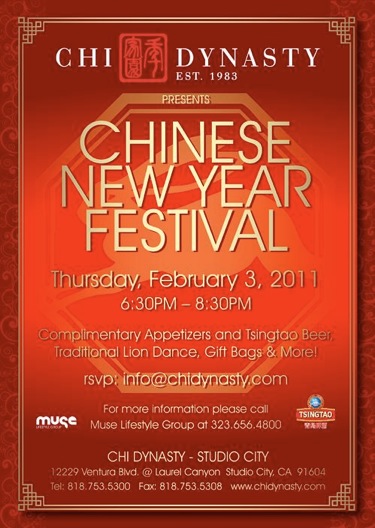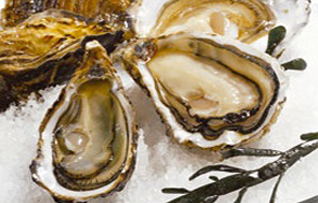
CHI DYNASTY CELEBRATES CHINESE NEW YEAR
Local Studio City restaurant transforms their parking lot into a Chinese New Year festival
Los Angeles, CA – (January 25, 2011) – Chi Dynasty in Studio City will celebrate the year of the Rabbit on February 3, 2011 when they transform their parking lot into a Chinese New Year festival.

Chi Dynasty will commemorate their heritage right on Ventura Blvd (12229 Ventura Blvd. Studio City, CA 91604) from 6:30PM – 8:30PM; complete with a traditional lion dance, red paper lanterns, and Chinese drummers. The event will be open to the public, providing guests with complimentary tray passed appetizers and beverages by Tsingtao Beer. As a parting gift, each guest will receive customary red envelopes with $8 in Chi Bucks to be used on their next visit. The restaurant will remain open during the event, allowing guests to stop in for dinner before or after the festival.
ABOUT CHI DYNASTY:
For over twenty-seven years, Chi Dynasty has had a long-standing reputation for exemplary service, value, and delectable Chinese cuisine. Using only the freshest ingredients and never compromising quality or taste, Chi Dynasty brings together authentic Chinese influences with a contemporary approach to Asian fare. Based on traditional values, Chi Dynasty provides an unforgettable dining experience to its customers, and continues to serve notable Chinese cuisine to old and newcomers alike. For menu and locations, please visit www.chidynasty.com.
ABOUT TSINGTAO
Tsingtao beer is one of the most popular beers in China and the No. 1 imported Chinese beer in the United States. Tsingtao is brewed and bottled at the Tsingtao Brewery in Qingdao, China, which was founded in 1903. Made with spring water from Laoshan, a mountain area famous throughout China for the purity of its water, Tsingtao is available in two varieties in the U.S. Tsingtao Lager is a pilsner-style beer with a crisp, slightly malty flavor and Tsingtao Pure Draft is a smooth, light-tasting, draft-style lager with a well-balanced taste and clean finish. For more information on the beers including pairing ideas, recipes and Chinese New Year celebration tips, please visit www.tsingtaobeer.com. Monarch Import Company (Crown Imports LLC) is the exclusive importer of Tsingtao Lager and Tsingtao Pure Draft in the United States.


